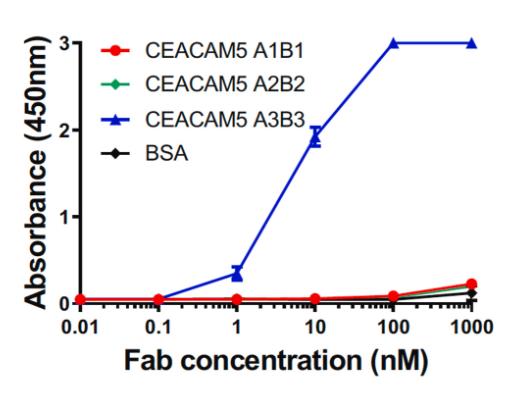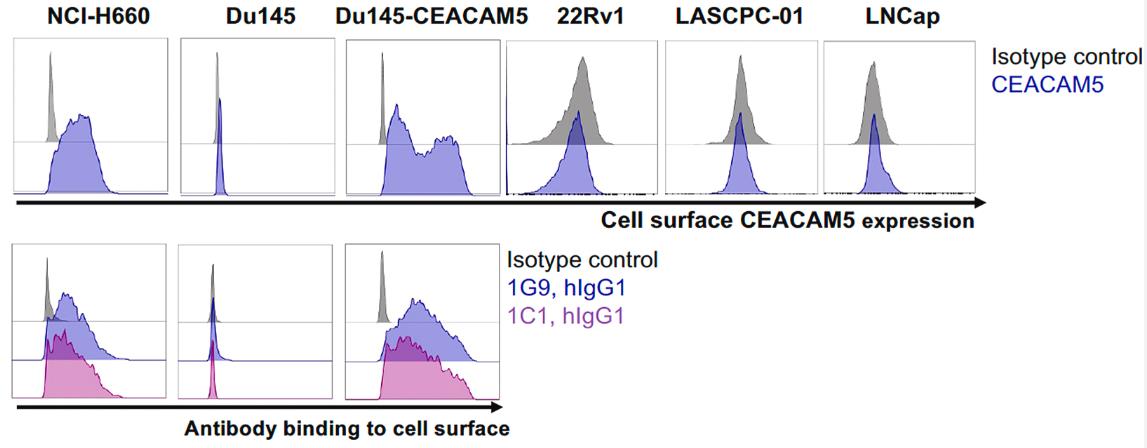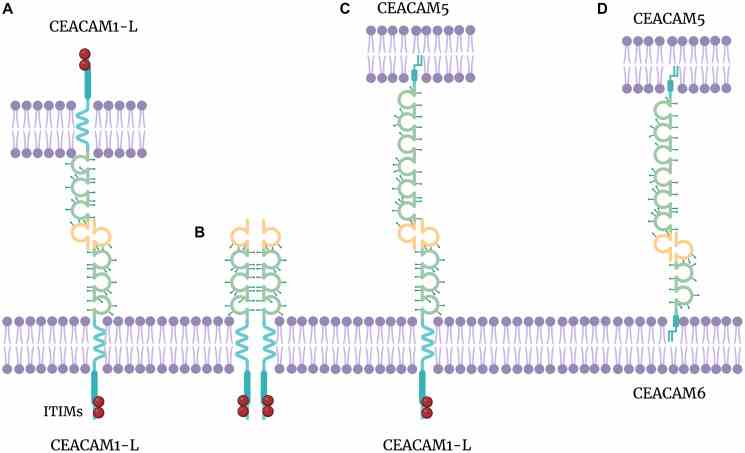Native Human CEACAM5
| Cat.No. : | CEACAM5-27803TH |
| Product Overview : | Native Human Carcinoembryonic Antigen was purified from Human Liver Metastases. |
| Availability | April 19, 2025 |
| Unit | |
| Price | |
| Qty |
- Specification
- Gene Information
- Related Products
- Case Study
- Application
- Download
| Species : | Human |
| Source : | Human Liver Metastases |
| Tag : | Non |
| Description : | Members of the CEACAM subfamily, including CEACAM5, belong to the CEA gene family. For general information on the CEA gene family, see CEACAM1. |
| Form : | Liquid in 20 mM Tris, 0.1 M sodium chloride, pH 7.4 with 0.05% sodium azide |
| Purity : | > 98% (SDS-PAGE) |
| Storage : | Store at -20ºC. Avoid freeze thaws. |
| Concentration : | 4.6 mg/ml |
| Gene Name | CEACAM5 carcinoembryonic antigen-related cell adhesion molecule 5 [ Homo sapiens (human) ] |
| Official Symbol | CEACAM5 |
| Synonyms | CEACAM5; carcinoembryonic antigen-related cell adhesion molecule 5; CEA; CD66e; meconium antigen 100 |
| Gene ID | 1048 |
| mRNA Refseq | NM_004363 |
| Protein Refseq | NP_004354 |
| MIM | 114890 |
| UniProt ID | P06731 |
| Chromosome Location | 19q13.1-q13.2 |
| Function | GPI anchor binding; identical protein binding; protein homodimerization activity |
| ◆ Recombinant Proteins | ||
| CEACAM5-2187C | Recombinant Cynomolgus CEACAM5 protein, His-Avi-tagged, Biotinylated | +Inquiry |
| CEACAM5-3257M | Recombinant Mouse CEACAM5 Protein, Fc-tagged | +Inquiry |
| CEACAM5-665HF | Recombinant Human CEACAM5 Protein, Fc/His-tagged, FITC conjugated | +Inquiry |
| CEACAM5-113H | Recombinant Human CEACAM5 Protein, His-tagged | +Inquiry |
| CEACAM5-052H | Active Recombinant Human CEACAM5 protein, His/Avi-tagged, Biotinylated | +Inquiry |
| ◆ Native Proteins | ||
| CEACAM5-27803TH | Native Human CEACAM5 | +Inquiry |
| ◆ Cell & Tissue Lysates | ||
| CEACAM5-2238HCL | Recombinant Human CEACAM5 cell lysate | +Inquiry |
Case 1: Wang X, et al. Clin Sci (Lond). 2022
This study investigated the role of CEA family member 5 (CEACAM5) in lymph node (LN) metastasis of head and neck squamous cell carcinoma (HNSCC). Researchers compared CEACAM5 levels in HNSCC tissues with and without LN metastasis through transcriptome sequencing and analyzed associations with the N stage of LN metastasis using TCGA and GEO databases. CEACAM5's expression was also assessed across 33 common human tumors.
CEACAM5 levels were higher in tumor tissues without LN metastasis and correlated with better prognosis in HNSCC patients. Functional studies in HNSCC cell lines revealed that CEACAM5 inhibits cell proliferation, migration, and promotes apoptosis. A mouse model confirmed CEACAM5's role in reducing LN metastasis.

Fig1. The protein expression of CEACAM5 in HNSCC tissues and adjacent normal tissues was analyzed by WB.

Fig2. Spearman's correlation between the expression of EMT-related transcription factors and that of CEACAM5 was analyzed based on data from TCGA.
Case 2: Baek DS, et al. Cancer Lett. 2022
Neuro-endocrine prostate cancer (NEPC) is a highly aggressive form of prostate cancer that is responsible for 20% of deaths from metastatic castration-resistant prostate cancer (CRPC) and has a poor prognosis. Due to its unique cell-surface markers, standard treatments are ineffective. Researchers have discovered that CEACAM5 is a specific marker for NEPC and have developed a novel fully-human monoclonal antibody, 1G9, that targets this protein with high affinity and specificity. The antibody 1G9 does not bind off-target to other proteins. It has demonstrated CEACAM5-specific antibody-dependent cellular cytotoxicity (ADCC) against NEPC cells both in vitro and in vivo. Additionally, CAR-T cells engineered with 1G9 scFv have shown potent antitumor effects in a mouse model of prostate cancer.

Fig1. Binding of Fab 1G9 to different domains of CEACAM5 in an indirect ELISA.

Fig2. Cell surface expression level of CEACAM5 and cell surface binding of hIgG1 1G9 and 1C1.
Human CEACAM5 (Human carcinoembryonic antigen-associated cell adhesion molecule 5) is a tumor marker that is overexpressed on the surface of various solid tumors and has important clinical application prospects. CEACAM5 belongs to the CEACAMs family and is a glycosylated cell surface protein that is usually rarely expressed in normal adult tissues.
CEACAM5 can be used as a tumor marker for a variety of cancers (such as colorectal cancer, stomach cancer, etc.) to help doctors conduct disease surveillance and prognosis assessment. CEACAM5xCD3 bisecific antibody can bind both T cells and tumor cells and activate the immune response of T cells to tumor cells, and its efficacy in treating CEACAM5-positive tumors is currently being evaluated in clinical trials. CEACAM5 is an important target for new drug development, and several drugs have entered the clinical stage, such as tusamitamab ravtansine and Labetuzumab govitecan, which exert anti-tumor effects by targeting CEACAM5.

Fig1. CEACAM interactions. (Jerin Thomas, 2023)
Not For Human Consumption!
Inquiry
- Reviews
- Q&As
Q&As (2)
Ask a questionThank you for your interest in our Native Human CEACAM5 product. CEACAM5-27803TH is purified from Human Liver Metastases.
The purification method is proprietary, but the CEACAM5-27803TH product is overwhelmingly full-length protein.
Ask a Question for All CEACAM5 Products
Required fields are marked with *
My Review for All CEACAM5 Products
Required fields are marked with *
Inquiry Basket

